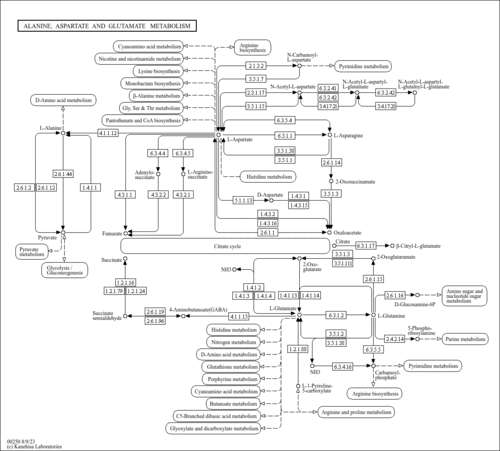| MS/MS | LC-MS/MS Spectrum - Quattro_QQQ 10V, N/A (Annotated) | splash10-000t-9000000000-0e85f764ac98e8949759 | 2012-07-25 | View Spectrum |
| MS/MS | LC-MS/MS Spectrum - Quattro_QQQ 25V, N/A (Annotated) | splash10-001i-9000000000-869a362083996a0cec77 | 2012-07-25 | View Spectrum |
| MS/MS | LC-MS/MS Spectrum - Quattro_QQQ 40V, N/A (Annotated) | splash10-03di-9000000000-801101cccfd6c25271d4 | 2012-07-25 | View Spectrum |
| MS/MS | LC-MS/MS Spectrum - LC-ESI-QTOF 10V, positive | splash10-0002-9000000000-6f386712e664a4b37a0f | 2020-07-21 | View Spectrum |
| MS/MS | LC-MS/MS Spectrum - LC-ESI-QTOF 20V, positive | splash10-0002-9000000000-94c04c712e24776fb333 | 2020-07-21 | View Spectrum |
| MS/MS | LC-MS/MS Spectrum - LC-ESI-QTOF 40V, positive | splash10-0002-9000000000-9cc1283f5af78eb26124 | 2020-07-21 | View Spectrum |
| MS/MS | LC-MS/MS Spectrum - LC-ESI-QFT , negative | splash10-0002-9000000000-c1da993c0996e8d60830 | 2020-07-21 | View Spectrum |
| MS/MS | LC-MS/MS Spectrum - LC-ESI-QTOF 35V, negative | splash10-002b-9000000000-ccb36e7b3439fcc25313 | 2020-07-21 | View Spectrum |
| MS/MS | LC-MS/MS Spectrum - LC-ESI-QTOF 10V, negative | splash10-004i-9000000000-e618cbd5a94aa5860a29 | 2020-07-21 | View Spectrum |
| MS/MS | LC-MS/MS Spectrum - LC-ESI-QTOF 20V, negative | splash10-004i-9000000000-b7f0efd9272b1a27eac4 | 2020-07-21 | View Spectrum |
| MS/MS | LC-MS/MS Spectrum - LC-ESI-QTOF 40V, negative | splash10-004i-9000000000-8cadeed88c84e8c2b6c2 | 2020-07-21 | View Spectrum |
| MS/MS | LC-MS/MS Spectrum - n/a 6V, negative | splash10-014i-9000000000-093cd2a2a662118d8432 | 2020-07-21 | View Spectrum |
| MS/MS | LC-MS/MS Spectrum - n/a 6V, negative | splash10-004i-9000000000-46d4cee1b5ac630ba9b8 | 2020-07-21 | View Spectrum |
| MS/MS | LC-MS/MS Spectrum - QqQ 1V, negative | splash10-0006-0090000000-40333890e636692e7970 | 2020-07-22 | View Spectrum |
| MS/MS | LC-MS/MS Spectrum - QqQ 2V, negative | splash10-0006-0190000000-52fa21c93ab4c97f8df2 | 2020-07-22 | View Spectrum |
| MS/MS | LC-MS/MS Spectrum - QqQ 3V, negative | splash10-0006-0490000000-32e316211facaa3d3bb2 | 2020-07-22 | View Spectrum |
| MS/MS | LC-MS/MS Spectrum - QqQ 4V, negative | splash10-0005-0960000000-bd7aaa47a8ffd82012d3 | 2020-07-22 | View Spectrum |
| MS/MS | LC-MS/MS Spectrum - QqQ 5V, negative | splash10-0002-0920000000-463d7b1bf72bcc10126f | 2020-07-22 | View Spectrum |
| MS/MS | LC-MS/MS Spectrum - QqQ 6V, negative | splash10-0002-0910000000-3c9c666ac95b68e43224 | 2020-07-22 | View Spectrum |
| Predicted MS/MS | Predicted LC-MS/MS Spectrum - 10V, Positive | splash10-0002-9000000000-12a5e23d24cd494e99c1 | 2016-09-14 | View Spectrum |
| Predicted MS/MS | Predicted LC-MS/MS Spectrum - 20V, Positive | splash10-0002-9000000000-91e06ca38117aabdb14c | 2016-09-14 | View Spectrum |
| Predicted MS/MS | Predicted LC-MS/MS Spectrum - 40V, Positive | splash10-000t-9000000000-19b1c041aa5e2adcc3e6 | 2016-09-14 | View Spectrum |
| Predicted MS/MS | Predicted LC-MS/MS Spectrum - 10V, Negative | splash10-0002-9000000000-e56eecd6724dfbf74160 | 2016-09-14 | View Spectrum |
| Predicted MS/MS | Predicted LC-MS/MS Spectrum - 20V, Negative | splash10-004i-9000000000-0a46ba32971030356ac5 | 2016-09-14 | View Spectrum |
| Predicted MS/MS | Predicted LC-MS/MS Spectrum - 40V, Negative | splash10-004i-9000000000-3a53d27e23b39429d092 | 2016-09-14 | View Spectrum |
